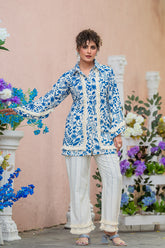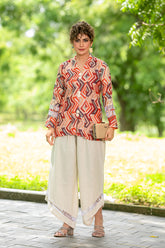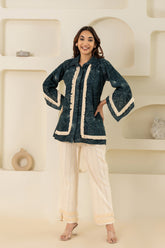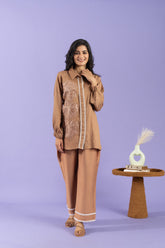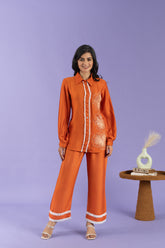Inclusivity in Indian Fashion: Embracing Diversity and Body Positivity in Recent Times

The Problem: A Narrow Definition of Beauty
For a long time, the Indian fashion industry focused on a narrow standard of beauty. Tall, slim, and fair-skinned models dominated the scene, leaving many individuals feeling invisible and underrepresented. Body types, skin tones, and cultural identities that didn’t fit this ideal were often overlooked. This not only created barriers for consumers but also led to low self-esteem among people who felt excluded from the world of fashion.
Why Inclusivity Matters Today
Things are changing, and for the better. Body positivity and diversity in fashion are now at the forefront of the industry. More designers and brands are recognizing the need for inclusivity, responding to the growing demand for representation. Fashion is no longer just about clothing—it's about making everyone feel seen, celebrated, and confident.
Consumers today are vocal about wanting to see models who reflect their real lives, with diverse body shapes, skin tones, and identities. This shift in the industry is not just about aesthetics but also about fostering a sense of community. Fashion, after all, is for everyone.
What This Blog Covers
This blog explores the rise of inclusive fashion in India and how the industry is embracing diversity and body positivity. We'll dive into the following topics:
-
How Indian brands are embracing inclusivity in their collections.
-
The impact of Body positivity in fashion.
-
The importance of Representation in fashion industry
-
Practical tips for brands to ensure diversity in their offerings.
A New Wave in Indian Fashion

-
Designing for All Sizes
In the past, fashion brands often limited their size ranges, excluding a large portion of the population. Thankfully, size inclusivity is now a key focus for many leading brands. ZNKL now offers more inclusive sizing, ensuring that women of all shapes and sizes can enjoy fashionable and well-fitted clothing. Brands are also embracing the concept of "custom fits" to cater to a variety of body types. This change allows everyone to feel like they belong in the world of high fashion. -
Skin Tone Representation
For years, fashion advertising has been dominated by light-skinned models. However, the Indian fashion scene is shifting toward more inclusive portrayals. Designers and brands are beginning to recognize the beauty of diverse skin tones. Modern campaigns now feature women of varying complexions, from deep brown to fair, making fashion relatable to a broader audience. This inclusion is empowering for women who have long felt that the fashion industry overlooked them. -
Body-Positive Models
The fashion world is also welcoming curvier models and individuals with different body types. Instead of promoting a one-size-fits-all standard, brands are showing that beauty comes in all forms. From plus-size models to women of all ages and heights, diversity is becoming a core principle in fashion. Indian fashion icons like Disha Patani and Sonakshi Sinha are proudly showcasing their curves, encouraging others to embrace their bodies as they are. This representation makes fashion feel more accessible and empowers consumers to make more confident choices.
How Inclusivity Boosts Brand Loyalty
-
Better Connections
Consumers want to see themselves represented in the brands they support. When fashion brands embrace diversity, it fosters a stronger emotional connection with their customers. People are more likely to choose brands that make them feel seen and valued. -
Increased Sales
An inclusive brand is a powerful brand. Studies show that campaigns that represent a diverse range of models lead to higher engagement and increased sales. Customers are more likely to make a purchase when they feel like the brand understands their needs and reflects their identity. -
Positive Brand Image
Incorporating inclusivity into a brand’s DNA doesn’t just build customer loyalty—it also positions the brand as progressive and socially responsible. Consumers are increasingly interested in supporting companies that champion diversity and body positivity.
Steps to Make Fashion More Inclusive

For fashion brands looking to embrace inclusivity, here are a few actionable steps:
-
Offer All Sizes: Ensure that your clothing range includes sizes from XS to 5XL. Don’t limit your customer base—let everyone enjoy the fashion experience.
-
Diverse Models: Use models of all skin tones, body types, and ages. Representation goes beyond just size and shape—consider hiring models of different backgrounds, ethnicities, and gender identities.
-
Tell Real Stories: Share real customer stories about how your clothes make them feel confident and beautiful. Showcasing everyday people wearing your brand will help others relate.
-
Use Neutral Terms: Replace potentially exclusive terms like "slim fit" with more inclusive terms like "comfort fit" or "classic fit." This will make your clothing line feel accessible to all.
-
Affordable Inclusive Wear: Ensure that your inclusive collections are priced reasonably so that everyone can afford to buy them.
Examples of Inclusivity in Indian Fashion
-
Anita Dongre: Known for championing body positivity, Anita Dongre’s campaigns feature women of varying ages and body types. She showcases the importance of inclusivity in traditional Indian wear, helping break stereotypes.
-
Ritu Kumar: Recently, Ritu Kumar launched a collection that celebrated the beauty of curvy women. The collection featured a wide variety of sizes, promoting inclusivity in high fashion.
-
Global Desi: This brand has always embraced diversity by using multicultural models in their campaigns. They celebrate different body types, skin tones, and backgrounds, setting a standard for others in the industry.
Conclusion: Be the Change
Inclusivity in fashion isn’t just a trend—it’s a movement. The time for diverse and body-positive fashion is now. By embracing diversity and celebrating all identities, the Indian fashion industry has the power to create a more welcoming and confident environment for everyone.
As consumers, we can make a difference by supporting brands that promote inclusivity. Together, we can push for a fashion world where everyone feels seen, celebrated, and empowered. Choose brands that celebrate diversity—because when fashion reflects reality, it becomes truly powerful.

